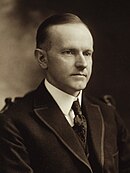User:AmericanBaath/sandbox
2044 Republican Party presidential primaries
[change | change source]
| |||||||||||||||||||||||||||||||||||
2,429 delegates to the Republican National Convention 1,215 delegate votes needed to win votes needed to win | |||||||||||||||||||||||||||||||||||
|---|---|---|---|---|---|---|---|---|---|---|---|---|---|---|---|---|---|---|---|---|---|---|---|---|---|---|---|---|---|---|---|---|---|---|---|
| |||||||||||||||||||||||||||||||||||
| |||||||||||||||||||||||||||||||||||
The 2044 Republican Party presidential primaries were a series of presidential primaries and caucuses within the Republican Partyheld between January 15, 2044, and June 4, 2044, ahead of the 2044 United States presidential election to determine the presidential nominee and his running mate. These elections selected the 2,429 delegates that were sent to the 2044 Republican National Convention.
In 2043, a crowded field of candidates emerged, including Governor of Minnesota Zeldin Stan, Governor of South Carolina Haley Fan, U.S. Representative from North Carolina's 1st congressional district Andrew Drew, and U.S. Senator from Texas Patrick Liberpublican. Polling generally generally showed Liberpublican in the lead, with Drew in close second, Fan in third, and Stan in fourth. Stan received a small polling bump after several strong debate performances. In the final months of 2043 and the early weeks of 2044, Fan began to rise in the polls and lessened the gap between herself and Drew, but she did not surpass him in polling. Given Liberpublican's consistent polling lead, many political commentators erroneously predicted that the primaries were to be a race for second place.
In the Iowa caucuses, Drew narrowly defeated Liberpublican, with Stan in third and Fan in a distant fourth. Fan subsequently suspended her presidential campaign and pledged to endorse the eventual Republican nominee. In the following New Hampshire primary, Liberpublican narrowly defeated Drew and Stan once again came in third. In spite of growing calls from him to drop out, Stan refused to suspend his campaign, promising to hold out unless he lost his home state of Minnesota. In the Nevada caucues, Stan won a landslide victory against Drew and Liberpublican. In the South Carolina primary, Fan won a decisive victory despite withdrawing a month earlier, prompting her to reenter the race. In the Michigan primary, Drew won a decisive victory after being endorsed by U.S. Senator from Michigan Justin Amash. Having failed to obtain Amash's endorsement, Liberpublican suspended his campaign and endorsed Drew. On Super Tuesday, Drew won many decisive victories and became the presumptive nominee of the Republican Party. Stan, having lost the Minnesota primary, suspended his campaign. Fan, who did not win any delegates on Super Tuesday, also suspended her campaign. Notably, neither Stan nor Fan endorsed Drew, despite the latter previously pledging to endorse the Republican nominee.
On July 18, 2044, Drew was officially nominated as the presidential candidate of the Republican Party at the 2044 Republican National Convention in Dallas, Texas. Governor of Michigan Max Cat was selected as his vice presidential running mate.
Results
[change | change source]Popular vote
| Party | Candidate | % |
|---|---|---|
| Republican | Andrew Drew | 42.4% |
| Republican | Patrick Liberpublican | 27.1% |
| Republican | Zeldin Stan | 18.6% |
| Republican | Haley Fan | 11.9% |
| Total votes | 100% | |
Candidates
[change | change source]Nominee
[change | change source]| Name | Experience | Home state | Campaign
Announcement date |
Delegates | Popular vote | Running mate |
|---|---|---|---|---|---|---|
 |
1,531
|
42.4% |
Withdrew during the primaries
[change | change source]| Name | Experience | Home state | Campaign announced | Campaign suspended | Campaign | Delegates | Popular vote |
|---|---|---|---|---|---|---|---|
 |
Governor of Minnesota
(2039–present) U.S. Representative from Minnesota's 3rd congressional district (2027–2039) |
November 15, 2042
|
March 6, 2044
|
Campaign
FEC filing |
536 | 18.6% | |
 |
Governor of South Carolina
(2027–2035, 2039–present) |
February 14, 2043
February 25, 2044 |
January 16, 2044
March 6, 2044 |
Campaign
FEC filing |
50 | 11.9% | |
 |
May 24, 2043
|
February 28, 2044
(endorsed Drew) |
Campaign
FEC filing |
312 | 27.1% |
Endorsements
[change | change source]Andrew Drew
[change | change source]| Andrew Drew 2044 presidential primary campaign endorsements |
|---|
|
Presidents
Vice Presidents
U.S. Senators
Governors
|
Candidates withdrawn during primary
[change | change source]Patrick Liberpublican
[change | change source]| Patrick Liberpublican 2044 presidential primary campaign endorsements |
|---|
|
President
Vice President
Governors
|
2044 United States presidential election
[change | change source]The 2044 United States presidential election will be the 60th quadrennial presidential election, set to be held on Tuesday, November 3, 2044. Voters in each state and the District of Columbia will choose a slate of electors to the United States Electoral College, who will then elect a President of the United States and a Vice President of the United States for a term of four years.
Incumbent Republican president Vivek Ramaswamy is ineligible to pursue a third term due to the term limits established by the Twenty-second Amendment to the United States Constitution. As such, a crowded field of candidates emerged in the Republican Party's presidential primaries to determine a successor to Ramaswamy. U.S. Senator Patrick Liberpublican, endorsed by former president Ron DeSantis, initially emerged as the leading contender. U.S. Representative Andrew Drew, endorsed by Ramaswamy, primarily polled in second. Liberpublican eventually dropped out, however, and endorsed Drew upon the latter's upset victory in the Michigan primary.




